
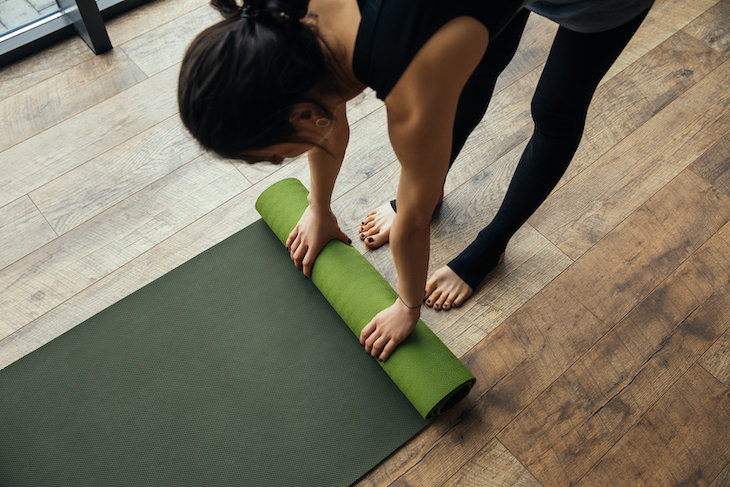
A restorative yoga sequence typically involves only five or six poses, supported by props that allow you to completely relax and rest. This yoga style is known to activate the parasympathetic nervous system, which is responsible for the body's so-called 'rest and digest' state when the body is relaxed, resting, or feeding.
As the name suggests, this style of yoga “restores” the body and activates the parasympathetic nervous system, which, in turn, helps the body rest, heal, and restore balance.
The key features in restorative yoga are the props, which can include blocks, bolsters, blankets, and more. In a restorative yoga session, each pose is held for 5 minutes or more, and during these long holds, the props, rather than your muscles, are what support your body. They allow you to feel comfortable and focus on your breathing, regardless of your previous experience with yoga.
Related: Beginner’s Yoga Tips: Which Yoga Style Is Right For You?
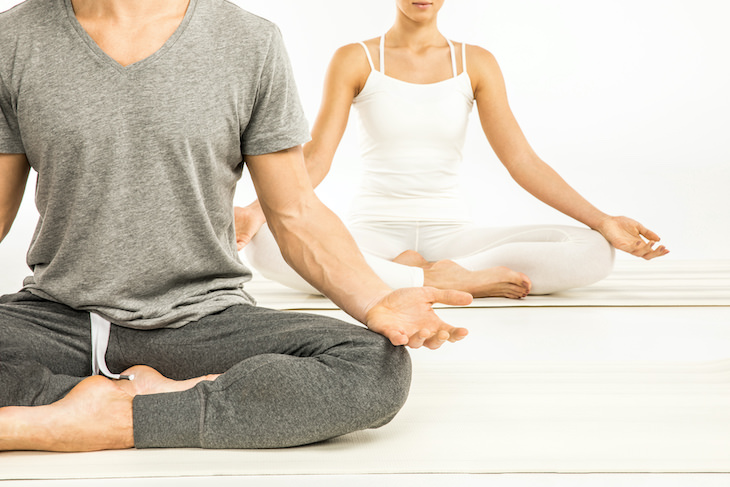
The benefits of restorative yoga are generally similar to those of other forms of yoga, mainly linked to reduced stress by lowering the levels of the stress hormone cortisol. Clinical research into restorative yoga has found that it helps shift the balance from your fight-or-flight response (sympathetic nervous system) to your relaxation response (parasympathetic nervous system), which decreases respiration, heart rate, and even alleviates depression symptoms. Lower levels of stress may result in other positive outcomes, such as less fatigue, a better quality of sleep, and more vigor.
Because restorative yoga is gentle on your body and generally safe, it is often recommended for people with acute or chronic injuries or illnesses. A 2018 study found that cancer patients who practiced restorative yoga reported an improvement in their psychological and physical symptoms.
As we mentioned above, restorative yoga is usually done with the help of props to make the poses gentler. That said, it is possible to practice any pose without props, too. In general, the poses should be held for a minimum of 5 minutes, but if you want to hold the pose longer, you’re free to do so as long as it feels comfortable. Some people hold restorative poses for 20 minutes or more. Here are a few restorative yoga poses you can try at home:
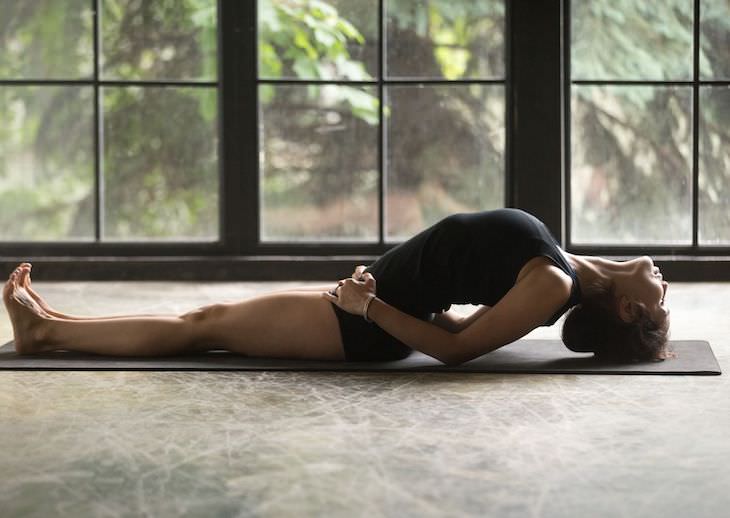
The fish pose can help elongate your spine, release tension in your neck and shoulders, and open up your chest. It’s an excellent choice for those who spend a lot of time sitting. To make this pose more comfortable, you can use a bolster or two folded blankets or towels under your shoulders and head.
How to do it:
1. Place your bolster or blankets in the center of your mat, parallel to each other with a small gap between them.
2. Start in a seated position with the blankets behind you.
3. Lie back and rest your shoulders on the blanket closest to you. Rest your head on the second blanket. You may keep your legs crossed, or extend them in front of you.
4. Let your arms fall to the sides with your palms turned up.
5. Close your eyes and take deep breaths while releasing tension in your body. Adjust the placement of the blocks as necessary to find your sweet spot. If the backbend is too intense for you, lower the height of the bolsters.
6. Stay in this pose for 10 minutes or more, focusing on deep breathing.
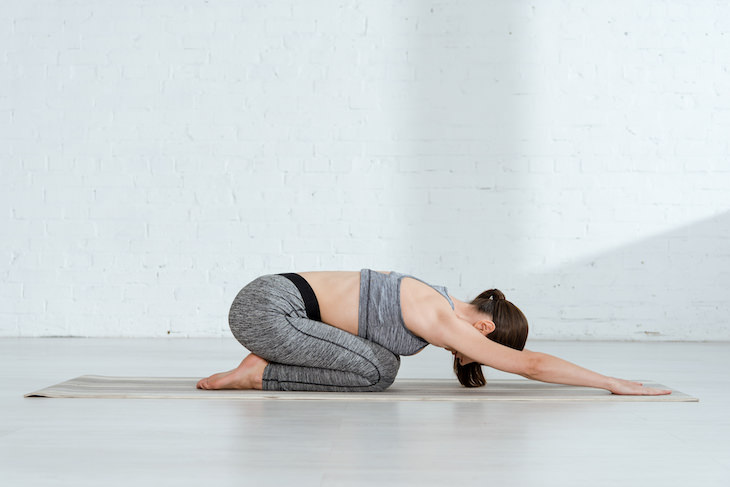
This pose gently stretches your spine, hips, glutes, and shoulder muscles. It has the ability to relieve back and neck pain if your head and torso are supported.
How to do it:
1. Kneel on the floor with your knees hip-width apart, big toes touching, buttocks on your heels.
2. You can place a cushion or folded blanket between your thighs and calves for support.
3. Inhale and as you exhale, bend forward. Bring your head down towards the floor.
4. Extend your arms out in front of you, above your head, with your palms on the floor. If this is too difficult, you can allow your arms to rest alongside your body with your palms facing up.
5. Remain in this pose for up to 5 minutes, inhaling and exhaling deeply.
6. Release by lifting your torso up into a seated position.
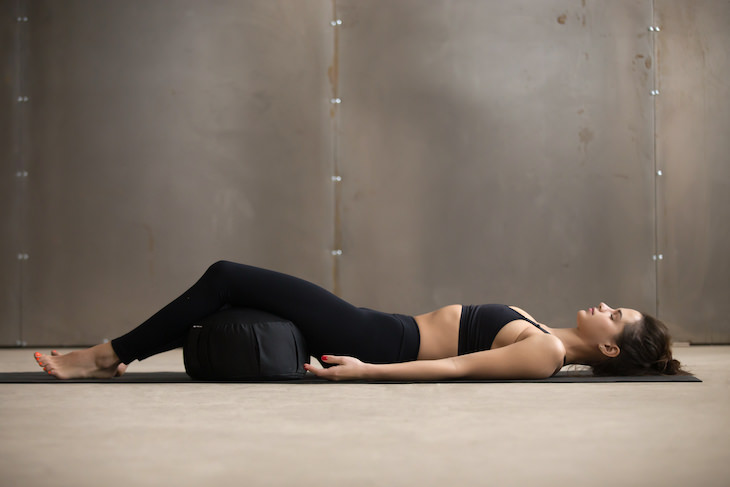
1. Place a folded blanket at the top of your mat, and a bolster or two folded blankets stacked on top of each other towards the end of your mat.
2. Sit between the folded blankets with your knees bent and back straight.
3. Lie back with your legs slightly separated and the back of your knees resting over the bolster/blanket, and your head resting on the other blanket.
4. Place your arms in a natural position at your sides with palms facing up. You will have a gap between your arms and body.
5. Stay in this pose for 10 minutes or more. Focus on deep breathing and releasing the tension in your muscles.
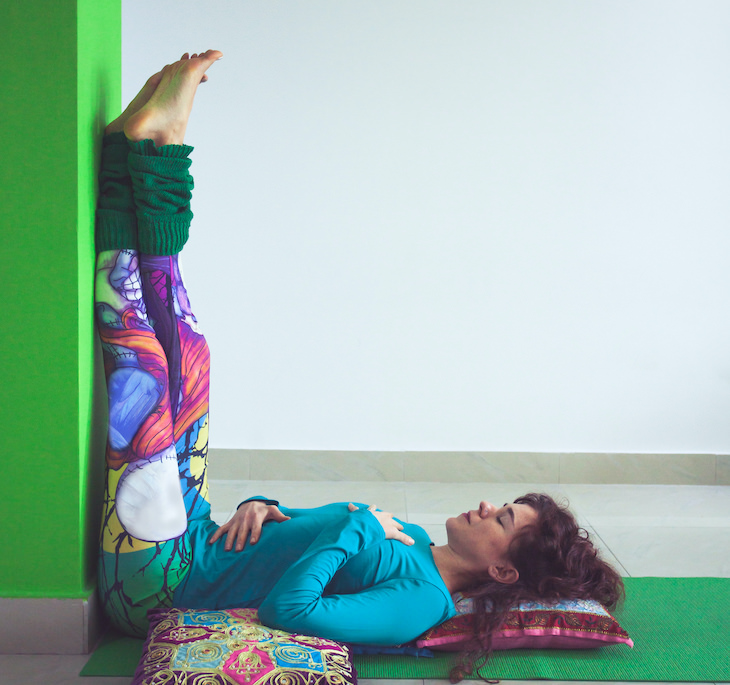
This pose gently stretches your hamstrings and the back of the neck, and it can help ease mild back pain.
How to do it:
1. Place the end of your yoga mat against the wall. Put a folded blanket in the middle of the mat. Your head will rest on the blanket (you can also use a blanket or a cushion to support your neck if you like).
2. Sit facing the wall, then lie back as you swing your legs up against the wall.
3. Try to get your buttocks as close to the wall as is comfortable for you. For extra support, you can place one to two folded blankets on the mat about 5 to 6 inches from the wall, so that your lower back can rest on them.
4. Bring your arms out to the sides, or let them rest on your torso.
5. Breathe in, and as you exhale, let your body relax, releasing your hips, back, and neck into the floor. Rest in this position for 10 minutes. Focus on deep breathing and releasing the tension in your muscles.
We hope this article is helpful for you in discovering and enjoying another style of yoga, which is meditative and gentle. Restorative yoga is generally considered safe, but if you have any concerns, talk to a healthcare provider before starting to practice this type of yoga.
If you found this article interesting, please pass it on to family and friends